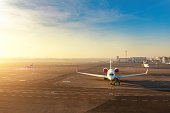The Evolution and Affect of Private Flying In Trendy Aviation
페이지 정보
작성자 Reed Alexander 작성일 25-08-16 10:16 조회 17 댓글 0본문
Private flying, sometimes called general aviation, has advanced significantly over the past century, transforming from a niche interest into a vital element of the worldwide transportation community. This article explores the historical growth, technological developments, economic implications, and social points of private flying, while also contemplating its future in an increasingly related world.
Historical Context
The roots of private flying will be traced back to the early twentieth century when aviation pioneers just like the Wright brothers and Charles Lindbergh captured the general public's imagination. Initially, flying was primarily a army endeavor or a spectacle for the wealthy elite. The introduction of the first business airlines within the 1920s and nineteen thirties marked a shift, making air travel more accessible however nonetheless largely limited to those that might afford it.

Put up-World War II, the aviation landscape underwent a dramatic transformation. The surplus of navy aircraft and the arrival of affordable private planes, such as the Cessna 172 and Piper Cub, democratized flying. The Federal Aviation Administration (FAA) established rules, and flying colleges proliferated, enabling a broader phase of the population to turn out to be pilots. By the 1970s, private flying had blossomed into a popular pastime, with hundreds of fanatics taking to the skies.
Technological Developments
The evolution of know-how has played a pivotal position in shaping private flying. The introduction of extra efficient engines, enhanced avionics, and improved supplies has made flying safer and more accessible. Trendy aircraft are equipped with refined navigation systems, autopilot capabilities, and collision avoidance technology, considerably decreasing the risks related to basic aviation.
Moreover, the rise of electric and hybrid aircraft is poised to revolutionize private flying once again. These environmentally pleasant options promise to reduce the carbon footprint of aviation, making flying extra sustainable. Firms like Pipistrel and Bye Aerospace are main the cost, developing electric aircraft that could transform the business's future.
Economic Implications
Private flying has substantial financial implications, contributing billions of dollars to the global financial system. In response to the general Aviation Manufacturers Association (GAMA), general aviation supports over 1.1 million jobs within the United States alone and generates approximately $150 billion in economic exercise annually. This contains manufacturing, upkeep, and companies associated with private flying.
Furthermore, private aviation serves as a vital lifeline for companies, notably in remote areas where business flights are infrequent or nonexistent. Corporations can make the most of private planes to entry markets, attend conferences, and transport items with unparalleled effectivity. This flexibility allows businesses to thrive in an increasingly aggressive landscape.
Social Facets
Beyond economics, private flying fosters social connections and group engagement. Flying clubs, which provide a platform for enthusiasts to share their passion, play an important position in promoting aviation culture. These clubs usually organize occasions, coaching periods, and social gatherings that assist foster a way of belonging among members.
Moreover, private flying has been instrumental in humanitarian efforts. Organizations like Wings of Hope and Angel Flight present free air transportation for medical patients, disaster relief, and different charitable causes. These initiatives highlight the potential of private aviation to positively impact society and enhance lives.
Regulatory Challenges
Despite its advantages, private flying faces quite a few regulatory challenges. Security issues, environmental influence, and international private jets charter airspace management are crucial issues that regulators should handle. The FAA and other governing our bodies repeatedly attempt to stability the wants of common aviation with these of economic airways and other airspace customers.
One vital problem is the rising price of flying. While developments in know-how have made flying safer, they have also led to elevated operational prices. Gas prices, upkeep bills, and insurance coverage premiums can deter potential pilots from pursuing their ardour. In consequence, trade stakeholders are advocating for more accessible coaching packages and monetary incentives to encourage participation in private flying.
The future of Private Flying
Trying forward, the way forward for international private jets charter private flying seems promising yet advanced. The mixing of advanced technologies, corresponding to artificial intelligence and autonomous flight techniques, might redefine the flying expertise. These improvements could result in elevated safety, efficiency, and accessibility, attracting a brand new technology of pilots.
Additionally, the rising emphasis on sustainability will probably form the business's trajectory. As public awareness of climate change intensifies, private flying should adapt to fulfill evolving environmental standards. The development of sustainable aviation fuels (SAFs) and electric aircraft can be crucial in addressing these considerations and guaranteeing the longevity of common aviation.
Furthermore, the rise of urban air mobility (UAM) presents exciting opportunities for private flying. If you have any questions regarding exactly where and how to use international private jets charter, you can speak to us at our own web-page. With the appearance of vertical takeoff and touchdown (VTOL) aircraft, the idea of air taxis could develop into a actuality, revolutionizing urban transportation. This shift may alleviate congestion on the roads and supply a brand new mode of travel for city dwellers.
Conclusion
Private flying has come a long way since its inception, evolving into a multifaceted industry that performs an important position in the worldwide economy and society. With technological developments, financial contributions, and social engagement, private flying continues to seize the imagination of fans and professionals alike.
As the business navigates regulatory challenges and embraces sustainability, the future of private flying promises to be dynamic and transformative. Whether or not by the lens of personal freedom, financial opportunity, or social duty, private flying stays an integral part of the aviation panorama, poised for continued growth and innovation within the years to return.
- 이전글 Revolutionizing Travel: The Rise Of Empty Leg Charter Flights
- 다음글 Buying Gold and Silver for Dummies: A Easy Guide To Treasured Metals Investment
댓글목록 0
등록된 댓글이 없습니다.

